#1947 Perfume
Explore tagged Tumblr posts
Text
Dil Dil Pakistan 1947 Perfume by J.

Dil Dil Pakistan 1947 Perfume stands as a beacon of national pride, a testament to the harmonious blend of scent and culture. It’s not just about smelling good; it’s about feeling connected, grounded, and proud. Get ready to embark on a fragrant journey that transcends time and borders.
Fragrance Accords
Unisex Appeal
One remarkable aspect of this fragrance is its universal appeal. Designed for both men and women, it breaks conventional barriers and becomes a symbol of inclusivity. Whether you’re a man embracing the woody notes or a woman drawn to the sweet-citrus tones, this perfume celebrates diversity.
Cultural Significance
Beyond the delightful aroma, Dil Dil Pakistan 1947 Perfume in Pakistan encapsulates the spirit and values of the nation. The sweet-citrus fruity notes mirror the vibrant colors and languages, creating a sensory experience that goes beyond scent and becomes a cultural statement.
Sensory Experience
Close your eyes, and let the perfume take you on a journey. Feel the burst of freshness as the top notes unfold, experience the blooming floral heart, and finally, sense the grounding woody and musky base notes. It’s not just a fragrance; it’s an immersive sensory experience that lingers.
Application Tips
To make the most of this fragrance, apply it to pulse points—wrists, behind ears, and the neck. Let the scent emanate subtly, creating an aura that reflects your connection to the rich cultural tapestry.
Patriotic Aromatherapy
In a world saturated with scents, Dil Dil Pakistan 1947 Perfume offers more than just a pleasant fragrance. It serves as a form of aromatherapy, connecting individuals to their roots, invoking a sense of pride, and creating a personal sanctuary in the midst of everyday chaos.
Packaging and Presentation
The visual appeal of the perfume bottle is as enchanting as the scent it holds. The packaging is a work of art, a visual representation of the essence within. It’s not just a perfume; it’s a piece of history, encased in a bottle that demands attention.
Celebrating 1947
The choice of the year 1947 is not arbitrary. It’s a nod to the historical significance of that era, a time when a nation was born. Dil Dil Pakistan 1947 Perfume celebrates the resilience, the sacrifices, and the pride of that momentous year.
#1947 Fragrance#1947 Perfume#1947 Perfume price#1947 Scent#Dil Dil Pakistan#Dil Dil Pakistan 1947 Perfume#Dil Dil Pakistan 1947 Perfume price#Dil Dil Pakistan Fragrance#Dil Dil Pakistan Perfume#Dil Dil Pakistan Perfume by j. Dil Dil Pakistan 1947 Perfume by j. j. 1947 Perfume#Gift for 1947#J. 1947 Perfume in Pakistan
1 note
·
View note
Text

Dil Dil Pakistan 1947 Perfume by J.
Dil Dil Pakistan 1947 Perfume stands as a beacon of national pride, a testament to the harmonious blend of scent and culture. It’s not just about smelling good; it’s about feeling connected, grounded, and proud. Get ready to embark on a fragrant journey that transcends time and borders.
Fragrance Accords
Imagine an olfactory journey that begins with the freshness of grapefruit and mandarin, dances through the floral elegance of jasmine and rose, and settles into the warm embrace of cedarwood and musk. This unisex fragrance belongs to the floral and fruity categories, creating a harmonious blend that is both invigorating and comforting.
Unisex Appeal
One remarkable aspect of this fragrance is its universal appeal. Designed for both men and women, it breaks conventional barriers and becomes a symbol of inclusivity. Whether you’re a man embracing the woody notes or a woman drawn to the sweet-citrus tones, this perfume celebrates diversity.
Cultural Significance
Beyond the delightful aroma, Dil Dil Pakistan 1947 Perfume encapsulates the spirit and values of the nation. The sweet-citrus fruity notes mirror the vibrant colors and languages, creating a sensory experience that goes beyond scent and becomes a cultural statement.
Sensory Experience
Close your eyes, and let the perfume take you on a journey. Feel the burst of freshness as the top notes unfold, experience the blooming floral heart, and finally, sense the grounding woody and musky base notes. It’s not just a fragrance; it’s an immersive sensory experience that lingers.
Application Tips
To make the most of this fragrance, apply it to pulse points—wrists, behind ears, and the neck. Let the scent emanate subtly, creating an aura that reflects your connection to the rich cultural tapestry.
Patriotic Aromatherapy
In a world saturated with scents, Dil Dil Pakistan 1947 Perfume offers more than just a pleasant fragrance. It serves as a form of aromatherapy, connecting individuals to their roots, invoking a sense of pride, and creating a personal sanctuary in the midst of everyday chaos.
Packaging and Presentation
The visual appeal of the perfume bottle is as enchanting as the scent it holds. The packaging is a work of art, a visual representation of the essence within. It’s not just a perfume; it’s a piece of history, encased in a bottle that demands attention.
Celebrating 1947
The choice of the year 1947 is not arbitrary. It’s a nod to the historical significance of that era, a time when a nation was born. Dil Dil Pakistan 1947 Perfume celebrates the resilience, the sacrifices, and the pride of that momentous year.
#1947 Fragrance#1947 Perfume#1947 Perfume price#1947 Scent#Dil Dil Pakistan#Dil Dil Pakistan 1947 Perfume#Dil Dil Pakistan 1947 Perfume price#Dil Dil Pakistan Fragrance#Dil Dil Pakistan Perfume#Dil Dil Pakistan Perfume by j. Dil Dil Pakistan 1947 Perfume by j. j. 1947 Perfume#Gift for 1947#J. 1947 Perfume in Pakistan
0 notes
Text


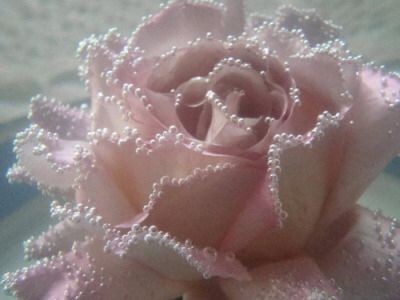

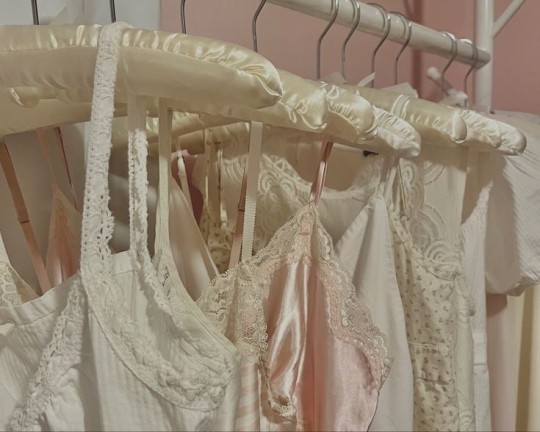
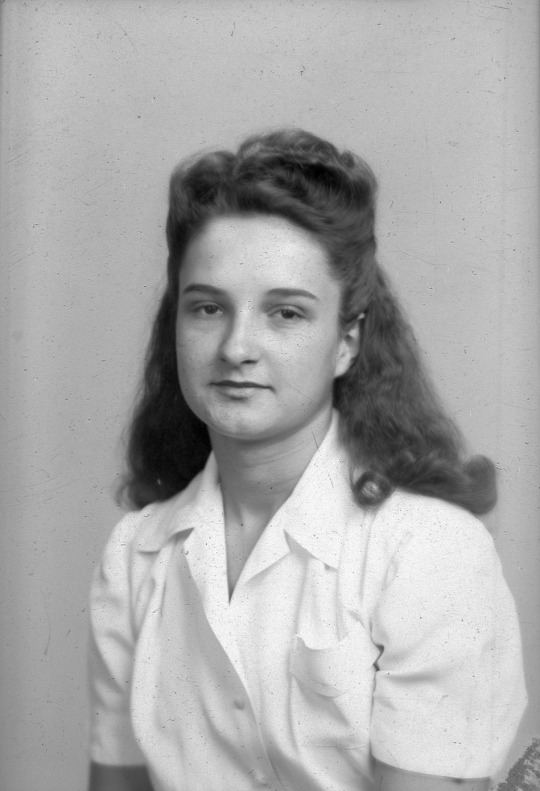

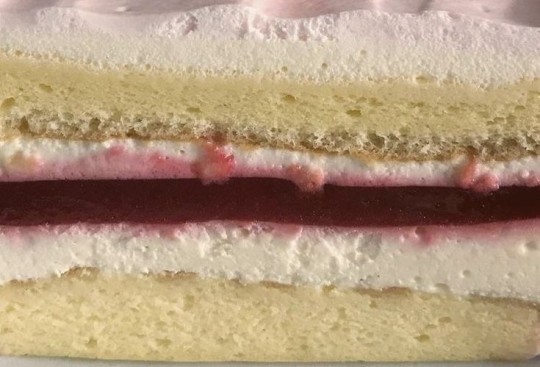


(Dividers by @dollywons )
#coquette#vintage coquette#coquette aesthetic#softcore#not mine#flickr#ribboncore#lovecore#morute#dollette#pearlcore#balletcore#1940s#1947#prepcore#audio#fragilehearted#sophie woodhouse#vanilla perfume#Spotify
10 notes
·
View notes
Text
Christian Dior New Look review - Francis Kurkdjian; 2024
The gremlins were out in full force the other day when I tried to review Christian Dior New Look (Francis Kurkdjian’s latest addition to La Collection Privee) so much so that I had to abandon the first broadcast and start all over again with a different one. Thankfully, the second attempt was glitch-free. Here’s a link to it – Christian Dior New Look review – followed by a link to a Substack post…

View On WordPress
#aldehyde#amber#Chanel#Christian Dior#Collection Privee#exclusive#Francis Kurkdjian#Francois Demachy#frankincense#Love At First Scent#LVMH#New Look#New Look 1947#No 22#perfume review#unisex#video#vlog#vlogger#YouTube
0 notes
Text
My body needs it—the hot baths, the care, the soft water, the perfume, the warmth. I take on the colors of the flowers, the bloom, the delicacy. It becomes me.
Anaïs Nin, Mirages: The Unexpurgated Diaries of Anaïs Nin 1939-1947
4K notes
·
View notes
Text
Fantasy Guide to the Fashion of 1940s

The 1940s was a time for great change in the world and in fashion. Marked by rationing and shortage of fabrics, the silhouette and availability of different cuts was limited so the women of the era turned to more fitted, shorter cuts.
Undergarments

The undergarments of the era were not as restrictive or complicated in WW2 as they were pre-WW1, but there were a lot of moving parts to the set-up.
Bra/Brassiere: Bras got shorter in the 1940s due to the rationing of fabric. They look much like they do today, made of light coloured fabrics and hooked with metal eyelets.
Panties/Knickers: The underwear. Elasticated underwear was around and actually exempt from rationing.
Girdle: The girdle rests on the lower torso, past the hips and were used for shaping as well as support.
Garters: Were worn at the top of the stocking just above the knee to hold the stocking in place.
Garter Belt: Was a belt worn around the waist and used to hold up the stockings and garters thanks to fastenings.
Slip: A slip is a light loose dress that is worn under another dress. It is long or short depending on the size of the dress you're wearing over it. The slip has slim straps and was usually plain though lace and embroidery were no uncommon. Most younger women favoured the half slip which was like another skirt.
Stockings: Stockings were worn over the lower legs, clipped and held in place by the garters. If your lady is lucky enough to have a friend on the black market, she might be lucky enough to have proper nylon tights. But if not, some ladies in this period dyed their legs with tea bags and drew the seam up the back of their legs to give the effect.
Outfits

Most women still wore skirts and dresses in the 1940s though some women switched to pants. Most of the outfits of the time followed a similar silhouette due to rationing: it was simple, unsophosticated, fitted, belted and hems remained just below the knee. A suit jacket and skirt combo was popular. Blouses and jumpers were also worn. Dresses were worn as well. Women would pair their outfit with accessories. They would always wear a hat outside and gloves.
Shoes

Shoes were effected by the war, with leather and rubber being limited. Most were brown, black or two two-tone shoes were popular. Oxford shoes, saddle shoes, loafers, court shoes, slingback were popular. These could be lace ups or have fastenings. Heels were usual, but rather short and stocky if worn in the day time. Most would be plain but some would have embellishments.
The Reality of the 1940s
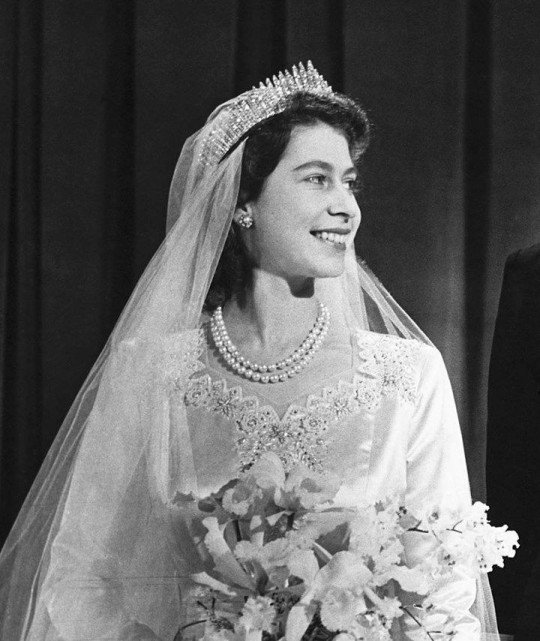
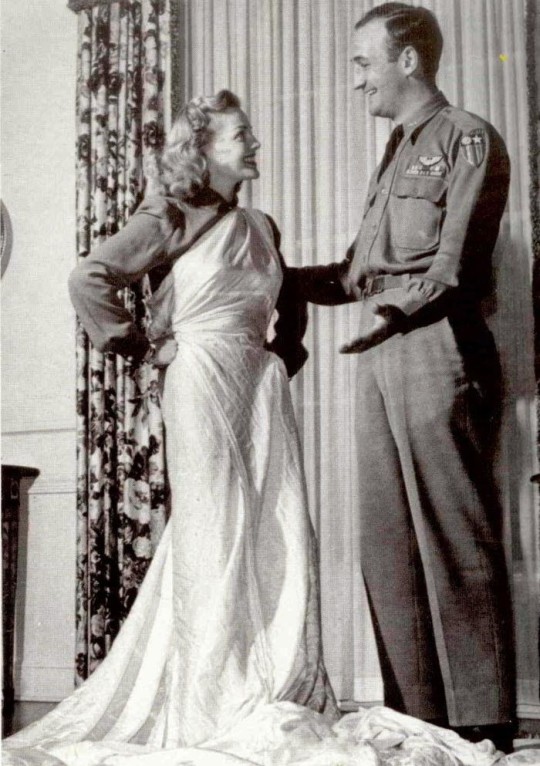
With war on and rationing well underway, the question of clothes was always on the mind. Most women did not have a large wardrobe and with clothing coupons little help, most women made and made due. Hems would be let down, larger sizes cut down and a lot of clothing reused. Fabric choice was limited, silk and nylon were used for parachutes and military applications. Clothing rations were the only way to get new clothes in the war. The average person was entitled at first to 66 clothing coupons per year. But that only would buy an outfit of clothes not including the necessaries. And the number of ration coupons went down as the war went on, down to 36 coupons in 1945. It was illegal to transfer coupons but even despite this, in 1947 hundreds of women offered the future Queen Elizabeth II their rations for her wedding dress. The offer was declined but the government had to approve the release of extra coupons to the Princess. Women also turned to alternatives to create clothes especially wedding gowns even made them out of parachutes!
Make up and Hair
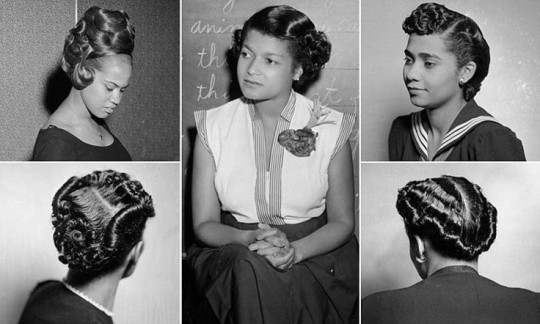
Make up and perfume was one of the many things that was rationed due to their chemical components such as glycerine. Women could access make up but due to rationing and many make up companies not having the ingredients or changing to more profitable and patriotic output, supplies were low. Women often turned to DIY, burnt cork for mascara and eyeliner, natural stains such as beetroot or cochineal for lipstick, crushed rose petals for blush, soot/charcoal for eyeliner, facemasks of egg white or oatmeal, beeswax for moisturiser and cold cream. As for hair women often turned to DIY to care and wash for their hair. Homemade shampoos were made from soap, vinegar and baking soda. Egg yolks were used for conditioner. Lemon juice was used to lighten hair. Olive oil was used to make hair shiny. Some popular hairstyles of the era:
Victory Rolls: This is the hairstyle you're probably thinking ofwhen you think of the 40s. It involves rolling the hair away from the face and rolling them at the top of the head.
Pin Curls: This is a hairstyle involving the curling and pinning of hair overnight got tight curls for the next day.
Pageboy: This is a shoulder-length style, curled at the ends
Waves: This style involves soft waves
Pompadours: The hairstyle involves the sweeping up of hair back from the face and sculpting it to be more voluminous.
Snoods: This is a sort of net worn over the hair, usually with a rat (a sort of device used to increase volume at the front of the hair)
Scarves: Were popular replacement for hats, used to cover their hair when going out.
#Fantasy Guide to 1940s fashion#1940s fashion#1940s clothes#1940s#Ww2#Ww2 fashion#writing#writeblr#writing resources#writing reference#writing advice#writer#spilled words#writer's problems#writer's life#wtwcommunity
360 notes
·
View notes
Text
Warmth, perfume, rugs, soft lights, books.
Mirages: The Unexpurgated Diary of Anaïs Nin, 1939–1947
#anais nin#literature#words#quotes#academia#dark academia#quote#lit#books#light academia#books and libraries#reading#quote of the day#bookworm#book quotes#prose#booklr#bibliophile#excerpt#q
543 notes
·
View notes
Text
Chloe held Colin's hand, breathing deeply the strawberry-scented air. She was in a little white woollen dress, with a short jacket of leopard-skin. Her spun hair flowed freely, exhaling a heady perfume of pink jasmine.
Boris Vian, Froth on the Daydream (1947)
#chloe is such a tragically underrated literary fashion icon#should that be a series?#froth on the daydream#boris vian#literature#favorite books
31 notes
·
View notes
Text

'display of "sleeping" perfume, schiaparelli shop, paris, 1947' in the surreal body: fetish + fashion - ghislaine wood (2007)
30 notes
·
View notes
Text
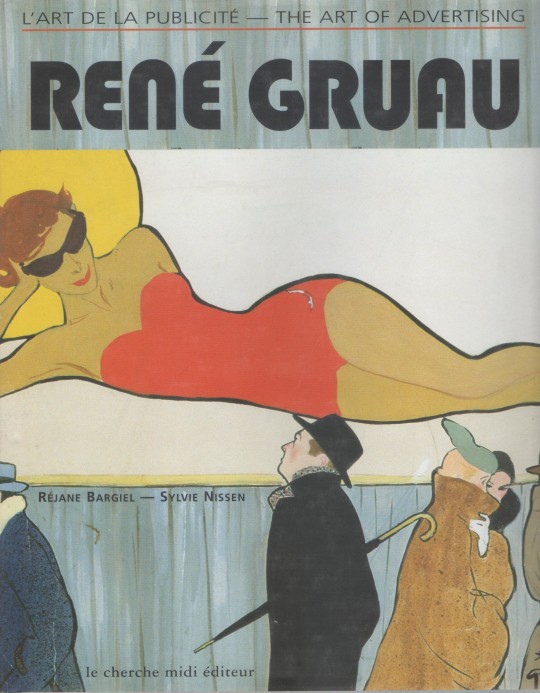

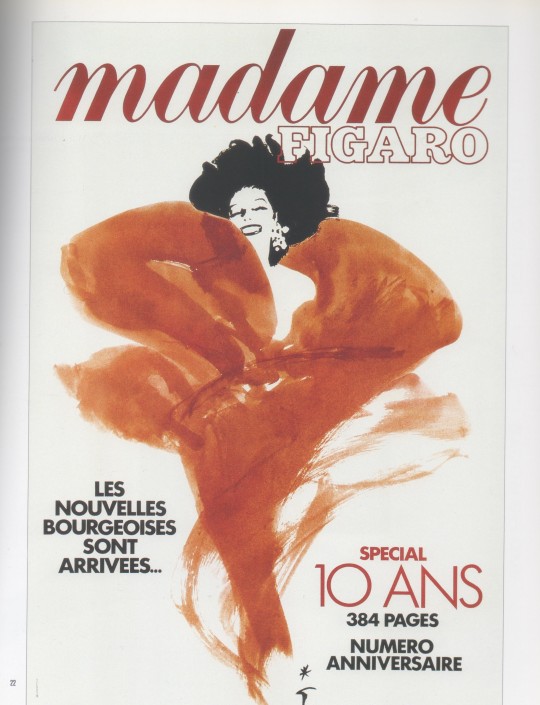
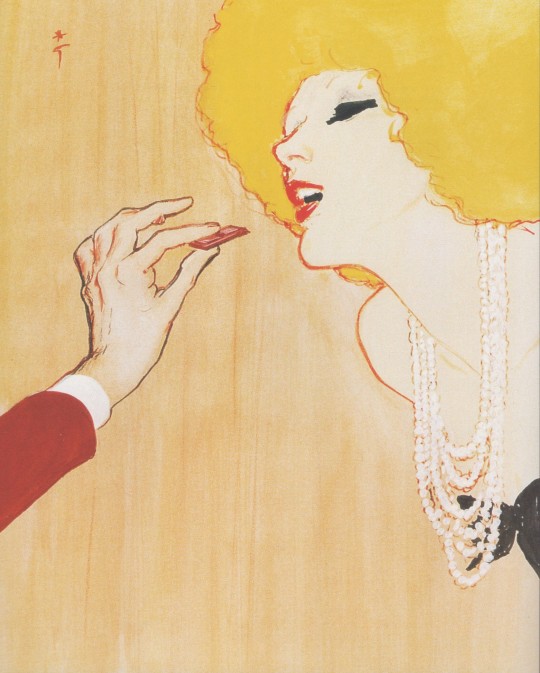




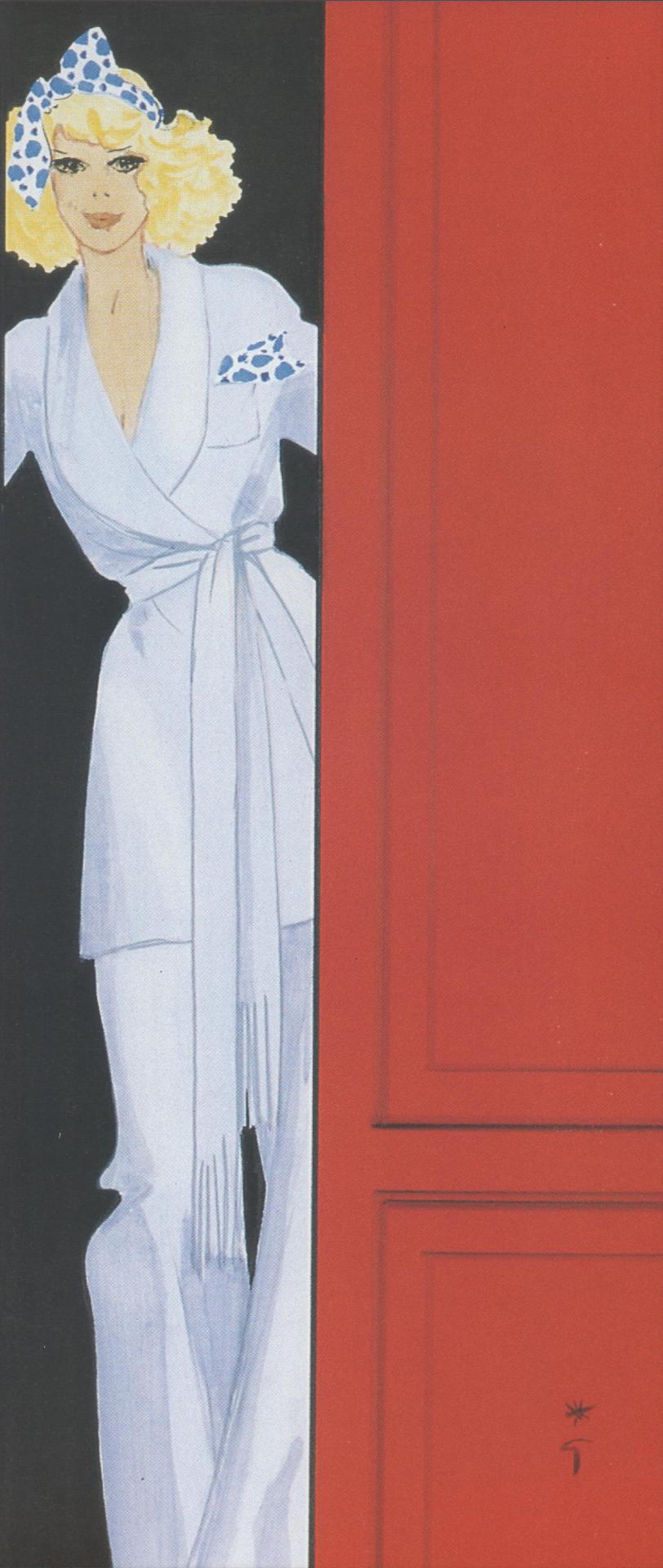
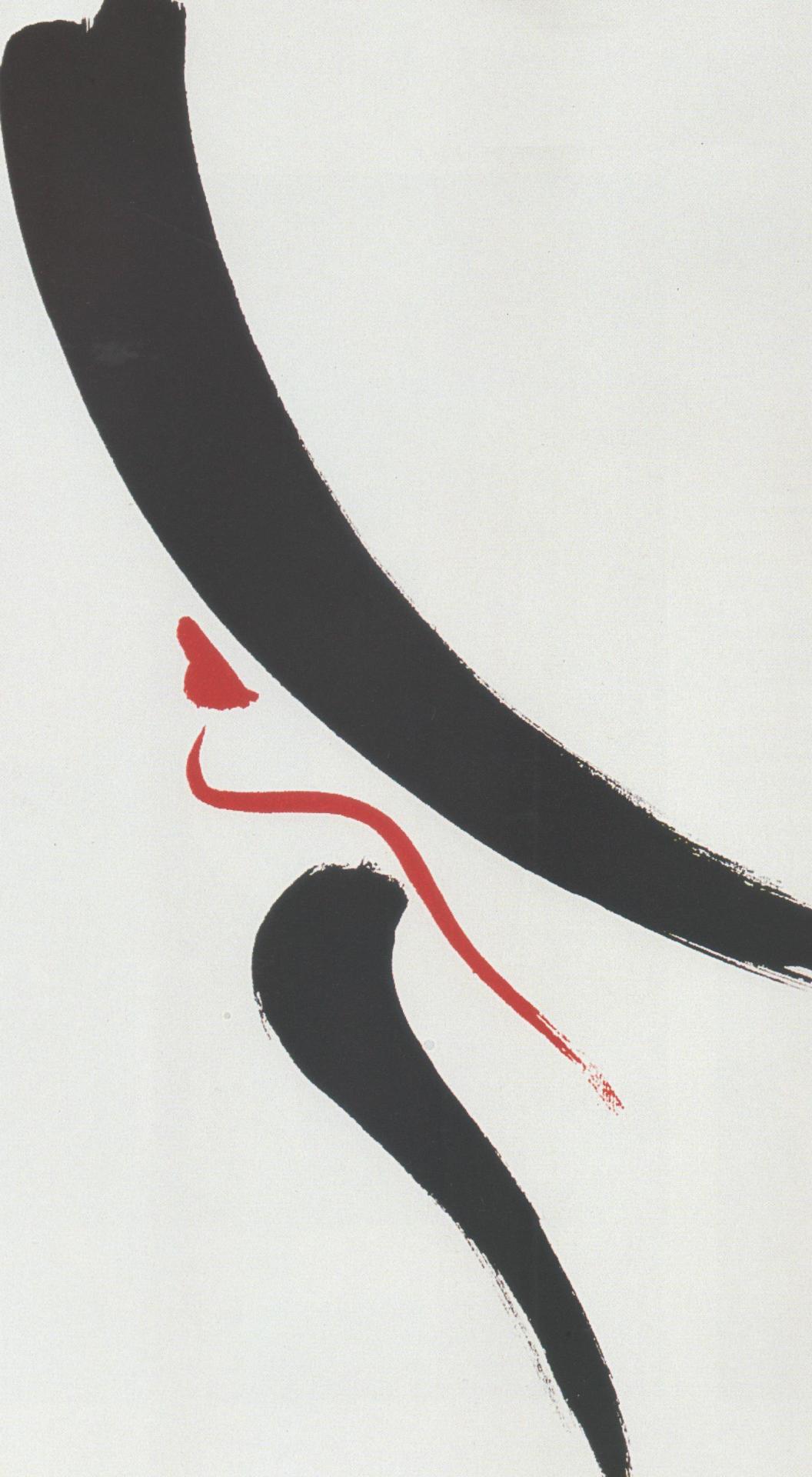


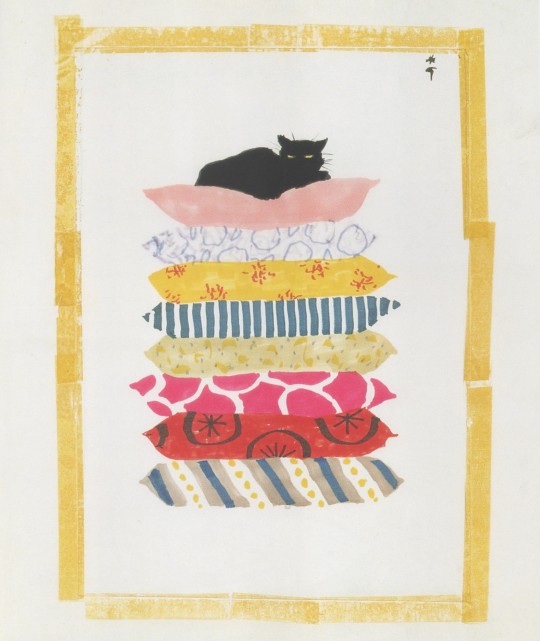

René Gruau L'art de la publicité The Art of Advertising
Réjane Bargiel, Sylvie Nissen
Le Cherche Midi, Paris 1999, 128 pages, 23x28cm, English/French, ISBN 9782862746951
euro 90,00
email if you want to buy [email protected]
Un G surmonté d'une étoile, griffe d'innombrables images appartenant à la mémoire collective. Des lèvres spirituelles qui attendent le baiser, des jambes sublimes jaillissant d'un nuage de plumes, des bras qui se tendent vers vous, des yeux splendidement expressifs qui plongent dans les vôtres. Voilà autant d'images emblématiques et célébrissimes de Gruau, affichiste et illustrateur qui constituent des repères incontournables de l'art publicitaire du XXe siècle. Autodidacte, nourri d'une culture classique et graphique à travers les travaux des grands peintres et illustrateurs du XIXe siècle, il a créé un style. Admirable synthèse graphique, son trait épuré parent de la calligraphie extrême-orientale, le chic de ses femmes mutines, toujours en mouvement symbolisent internationalement l'élégance. Depuis 1947, il imagine la publicité des parfums Dior, réinvente depuis plus de 30 ans l'affiche de music-hall pour le Bal du Moulin Rouge et le Lido. A 90 ans, René Gruau, très actif professionnellement symbolise à la fois l'héritage de l'art graphique et publicitaire du XIXe siècle et la modernité de la fin du XXe siècle. Gruau's trademark, the letter G crowned with a star, bas become a part of our collective memory. It has marked many memorable images: a spiritual set of lips just waiting to be kissed, a sublime pair of legs emerging from a cloud of feathers, arms that stretch out invitingly, splendidly expressive eyes like bottomless pools. Gruau's famous, emblematic images are at the core of twentieth-century advertising art. An autodidact thoroughly familiar with classical painting and graphic art, Gruau drew on the work of the great artists and illustrators of the nineteenth century in order to create his own unique style. In short, his work represents an admirable graphic synthesis. The purity of his line recalls Oriental calligraphy, while his chic, saucy women, always in motion, are an international symbol of elegance. He has been the creative force behind Dior perfume ads since 1947. For over 50 years he has reinvented the dancehall poster for the Moulin Rouge and the Lido. Still a working professional at 90 years old, Gruau symbolizes both the heritage of nineteenth-century modernism.
06/12/23
82 notes
·
View notes
Text
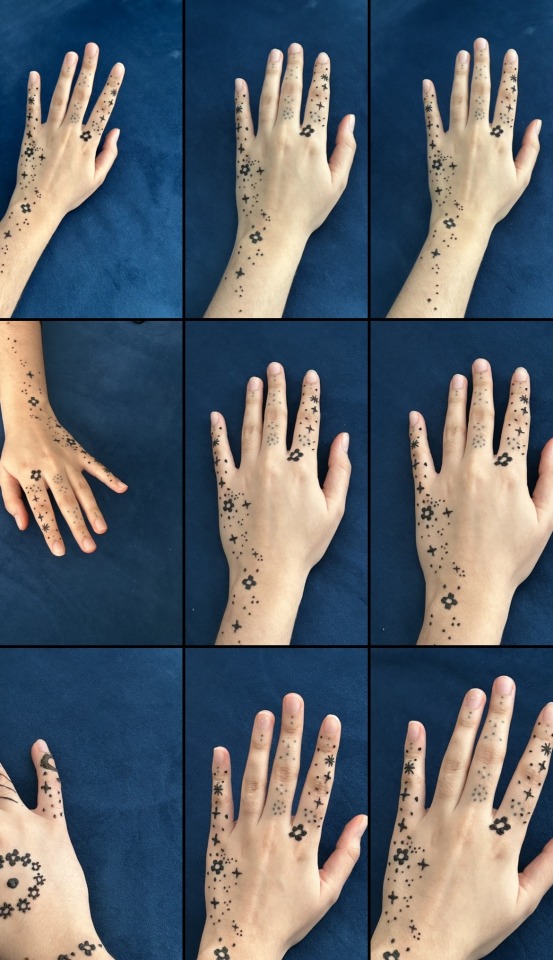
the girl with rituals
"I came home. I enjoyed my bath. I enjoyed perfuming myself. I knew I was born for this, to do it over and over again, the ritual of the dressing, the perfuming for love, for sensuality. I enjoyed everything sensually"
—(Anaïs Nin, from a diary entry featured in Mirages:
The Unexpurgated Diary; 1939-1947)
#desi tumblr#desiblr#desi tag#desi aesthetic#poetry#poets corner#indian dark academia#desi culture#desi poetry#desi stuff#desi dark academia#indian writers#indian poetry#indian women#desi women#light acadamia aesthetic#desi light academia#indian light academia#dark academic aesthetic#love#desi moodboard#desidarkacademia#old bollywood#desi things#indian tumblr
27 notes
·
View notes
Text

Linda Darnell for Forever Amber Perfume, Harper's Bazaar, vol. 81, no 2827 (July 1947).
16 notes
·
View notes
Text
Emma Larsson & María Elena Walsh

La casa
Allá estarán las cosas todavía, a punto de no ser, contradiciéndose. En el hastío de las escaleras y en la resignación de las paredes aun seguirá creciendo aquella sombra con su sed de presagios inminentes.
Aquella sombra, ay, aquella sombra fría como la sal y como el verde. Su perfume inquietante, su leyenda de confidencias y de pareceres caía en el ramaje de mis hombros con la perseverancia de la nieve.
Yo nunca tuve edad. Por eso entonces crecí en la medida de mi muerte ante la certidumbre del dolor y la presencia de lo inexistente y esa frialdad de las antiguas voces sólo atentas a sus atardeceres.
Dejadme que imagine: allí quedaron los guantes amarillos del jinete, el crucifijo, las lamentaciones, la ácida vigilancia de la fiebre. (Consternación que pudo perpetuarse en el mundo asombrado de mi frente.)
Yo sé que quise huir de los espejos deshabitados insistentemente, de la cal angustiosa, de la fecha, de la persecución de los caireles, de sombras que llovían por los muros lentas como la miel, y amargamente.
Es verdad que nací para estar triste junto a cualquier ventana, cuando llueve. Pero eso sí: guardadme mi silencio, aquel tan habituado a mis papeles, desordenado como las estrellas, amigo de mi voz, sencillamente.
No me llevéis a las habitaciones donde sollozan doloridos seres, en donde no podría habitar nunca el aire que respiran los juguetes. Porque no quiero ver anochecida mi propensión a los amaneceres.
María Elena Walsh
De: Otoño imperdonable, 1947
6 notes
·
View notes
Text










La Véritable Eau De Menton
(Depuis 1947, Prestige de Menton)
Fragrance notes: Bergamot, Lemon, Petitgrain
(Divider by @plum98 )
#1940s#1947#petit de menton#la veritable eau de menton#french riviera#mediterranean#france#european summer#vintage coquette#coquette#coquette aesthetic#coquette fashion#not mine#summercore#dorothy lamour#perfume
17 notes
·
View notes
Text
Sparking Joy (Jean Patou, 1930)
What's the best perfume of all time? Objectively, I don't think that's an answerable question; it might be that the absolute best perfume (which means what?) is something designed by an artisan outside the French tradition or the Arabian tradition, or not by a professional nose at all, but a single bottle mixed up by a hobbyist in some quiet little corner of the world. We just don't know. But much the way the American Film Institute decrees that Citizen Kane is the best [American] film of all time, what do Those in the Know think is the best? Chanel No. 5, right? The top seller in the world for decades?
Not at all. In 2000, the Fragrance Foundation FiFi Awards bestowed the public's choice for "Scent of the Century" on Jean Patou's Joy.
I remember reading this in the newspaper at the time, back when we had newspapers; I hadn't even worn fragrance since Sun-Ripened Raspberry body splash in high school, and I was shocked that it wasn't Chanel No. 5. I have to think "the public" meant "knowledgeable members of the perfume industry," because I had never heard of Joy, and most people I've talked to (who aren't hanging out on on fragrance forums) haven't, either. I feel like many of us would reflexively say "No. 5" because Chanel's done that good a job at shoring up their flagship's legend.
The story of Jean Patou's Joy is the opposite: when a fragrance isn't given the respect it deserves.
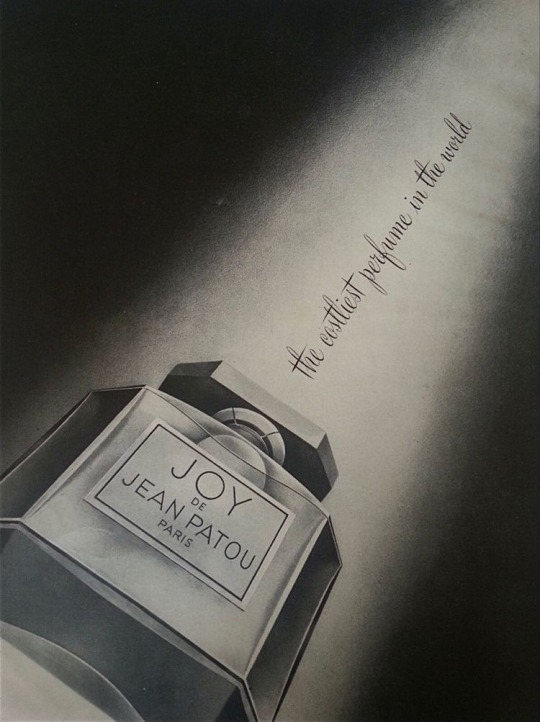
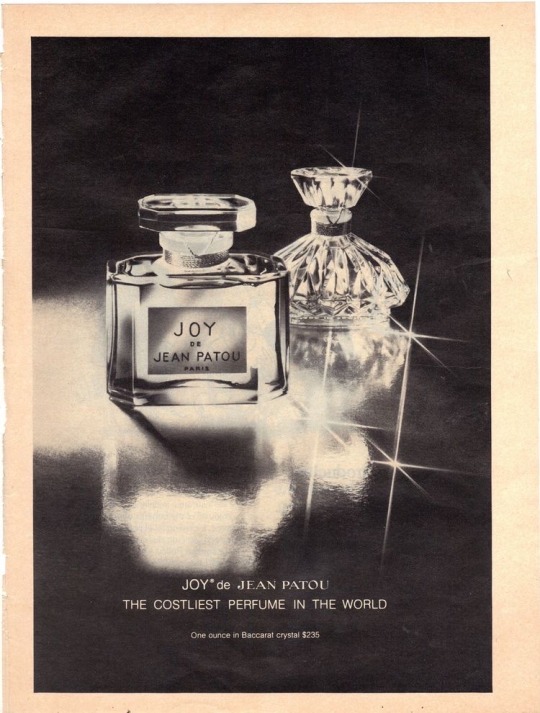
(Joy ads, 1947 and 1978; more here)
Famously, back when Joy was famous, perfumer Henri Alméras created Joy for Parisian couturier Jean Patou, as an oddly defiant, perhaps even life-affirming reaction to the 1929 Wall Street crash. At the time, it was "the costliest perfume in the world": "One ounce of the lavish scent contains 10,600 jasmine flowers and 28 dozen May roses"—and it cost $40 ($728.45!!!). And I might say it's a little obscene to create such an extravagant thing in the middle of the Great Depression—and yet, somehow, Joy was a huge success. A master perfumer created a work of art for a luxury vendor, and people bought it, and they loved it. Jackie Kennedy wore it; Vivien Leigh wore it. I've been wearing Joy for three weeks, and if I could have saved up enough pennies in 1930 to buy a tiny vial, I could see myself doing it, just to have that little something.
Joy was explicitly intended to be "a lighthouse" in a dark time of deprivation, and it wasn't overpriced just for the hell of it; it was the costliest in the sense of quality. It might best be known for its rose-jasmine pairing, but besides the entire region of Grasse crammed into every bottle, Joy also contains "leafy green notes," tuberose, ylang-ylang, aldehydes, peach (our old friend undecalactone?), lily of the valley, orris root, orchid, civet, musk, and sandalwood; Wikipedia also lists "michelia," which may mean magnolia here.
I'll admit up front that I have no idea when the sample I bought last month was produced, but the “juice,” as they say, looks very new; it doesn't have the deep dark color that I've seen on vintage bottles of Joy. It's got to be one of the newer formulations. Tom at Perfume Posse can speak for the older ones:
The [2022 sample] I received smells thinner than I remember - more skimming over those fields of flowers than just bashing into them, face-first. The Joy I remember reveled in the excess: bowers of roses, masses of lilies, clouds of tuberose backed with some of that “don’t F with me” musk that must have been civet back in the day. This is nice. Nice and sweet, with only a hint of the previous hedonist.
Angela at Now Smell This:
For the longest time, to me Joy smelled dense, like a Victorian room with the curtains pulled. I couldn’t feel my way around in it. The turning point for me came from hearing current Patou house perfumer Thomas Fontaine describe Joy’s sillage as lush and old fashioned. I’d been trying to make Joy a light, happy perfume. Really, it’s a gorgeously constructed velvet overcoat, heavy and plush and meticulously made. It’s red wine, not champagne.
The Scented Hound:
Joy (current version eau de parfum) is truly a joy when it first goes on the skin as it’s full of lush ylang-ylang and soapy white flowers and bright aldehydes. [...] As Joy continues its slow and deliberate path, a jasmine blends itself with the rose…but combined, they’re still very controlled and incredibly proper. Joy doesn’t transform or morph very much, but in the end, the florals fade and soften a bit, and what you’re left is a lightly warm breeze of light floral sandalwood musk.
The version I have is clearly the newer one—I actually would say it's more like champagne, not in the literal effervescent way (see the Coco Mademoiselles), but in the sense that this Joy is light. Not weak, but light, the way I described the aspect of No. 5 that I could stand as "limpid." In my head, Joy is a beautiful sunset pink color, sheer, almost verging into red. The jasmine comes out the strongest for me at first, maybe with the slight presence of an aldehyde, but then, on top of that, the biggest, fullest, realest rose I've ever smelled in a perfume. If I get cut flowers for my birthday, I always save any roses in the bouquet and dry them. Jean Patou's Joy smells like a rose that is so fully blown that the petals fall apart in my hand when I try to pull it from the vase. Not decaying, not that far gone, but the rose's absolute full potential of bloom, and so vividly that I can see the texture of the petals. If you want to tell me there’s 336 roses in here, I will believe you.
On my skin, the rose floats there on top, on a bed of headier florals, for at least half an hour; in my notes, I jotted down that a spicy ylang-ylang "with a slight bubblegum connotation" (see Samsara for more on the bubbleylang) shows up then, and by an hour-twenty, the whole thing has come together, all flowers present at once in a sweet, soft, heady, slightly spicy, rose-pink glow.
[Sidebar: At three hours, Joy reminded me in some non-literal way of Murray & Lanman's Florida Water, also billed as "the Richest of All Perfumes" in the late 1800s. (Of course I got myself a bottle of an actual Gilded Age perfume they still sell today for $4, are you kidding me?) I've seen a lot of Florida Water formulas (which are still used today in various spiritual traditions), and I've mostly seen lavender, clove, and multiple citrus notes as the components, sometimes with rose, ylang-ylang, and/or cinnamon as well. Unlike many, many French perfumes, Jean Patou's Joy doesn't have any citrus top notes at all, so I'm not sure what I'm getting in common with Florida Water, other than the florals and a certain spiciness that comes out late in Joy's game for me. I'd like to think it's purely the "richness" that reminds me of the Costliest Perfume in the World.]
"Warm breeze" is a good way to describe Joy's drydown; it's not heavy or old-fashioned to me at all, and I can't specifically pick out musk at any point (clearly, this sample was made after real animal musk was banned in 1979; anything animalic still here would be synthetic). I barely get sandalwood—it's just gorgeous florals, and if you (I) haven't smelled the original Joy, you aren't capable of missing it. Now Smell This has a breakdown of how the eau de toilette and the eau de parfum differed as of 2008; I got the EdP. I don't feel like it goes from light to dark, but it does smell very lush and complex to me. It feels like it sings, and you know what? When I first smelled it, I thought it smelled like a number of things I'd tried recently, particularly Coco Mademoiselle L'Eau Privée. That glowing pink rose-jasmine-ylang-sandalwood combination—and then I realized, no, those perfumes smell like Joy. Joy is so iconic that it's used as a building block, a quotation, in so many fragrances that came after it.
And it's so, so easy to wear—in fairness, I haven't worn the heavier original formulation, but I'm not even sure I'd want to. This Joy is so easy and lovely and gorgeous—I've been wondering if I'd ever find my one signature scent to rule them all, and while Joy doesn't have all my favorite notes, I wouldn't mind if it became mine.
But here's the thing: they don't manufacture Joy anymore. You can still buy what's already been produced, for now, but as existing supplies sell out, it'll only get more expensive with time. Because someone bought the rights to Jean Patou's Joy for the sole purpose of not producing it.
You're about to get a second post about who did that and why.
Perfume discussion masterpost
#perfume#perfume discussion#long post#perfume: jean patou#note: jasmine#note: rose#note: ylang ylang
57 notes
·
View notes
Text
Warmth, perfume, rugs, soft lights, books.
Anaïs Nin, from a diary entry featured in Mirages: The Unexpurgated Diary of Anaïs Nin, 1939-1947
458 notes
·
View notes